Found a total of 10000 related content

How to work with image manipulation in php
Article Introduction:GD and Imagick can be used for PHP image processing, GD is suitable for thumbnails and watermarks, and Imagick supports advanced effects. It requires enabling extensions and verification of input, freeing memory, and ensuring upload security.
2025-08-27
comment 0
425

PHP Master | Adding Text Watermarks with Imagick
Article Introduction:Imagick PHP extension library details: Add text watermark to images
This article will explain how to use PHP's Imagick extension library to add text watermarks to images. We will explore a variety of methods, including simple text overlay, creating transparent text watermarks using font masks, and more advanced text tiling techniques.
Key points:
Imagick is a powerful PHP extension library that can be used to process images, including adding text watermarks.
Text watermarking can be achieved by creating an Imagick class instance, reading an image, setting the font properties using the ImagickDraw instance, and then adding text to the image using the annotateImage() method.
There are many ways to add text
2025-02-25
comment 0
365

What is the use of the << operator in PHP?
Article Introduction:In PHP, implementing polymorphism can be achieved through method rewriting, interfaces, and type prompts. 1) Method rewriting: Subclasses override parent class methods and perform different behaviors according to object type. 2) Interface: The class implements multiple interfaces to realize polymorphism. 3) Type prompt: Ensure that the function parameters are specific to the type and achieve polymorphism.
2025-05-20
comment 0
1130
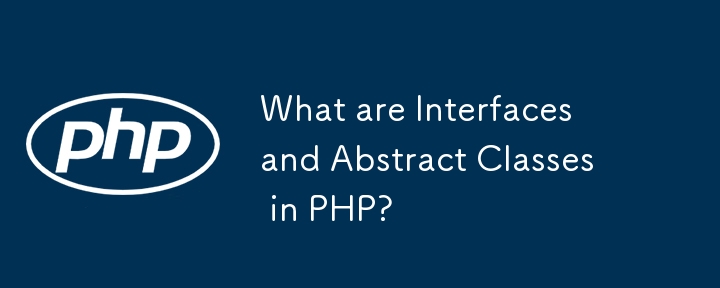
What are Interfaces and Abstract Classes in PHP?
Article Introduction:An interface is a contract that defines the methods that a class must implement. A class can implement multiple interfaces; an abstract class is a semi-finished class that cannot be instantiated and can contain abstract methods and concrete implementations. Subclasses can only inherit one abstract class. For example, the Logger interface specifies a log method, and FileLogger implements it; Animal abstract class has abstract method makeSound and concrete method sleep, and Dog inherits and implements makeSound. Use interfaces to define common behaviors, such as payment interfaces; use abstract classes to adapt to shared logic, such as public methods of animal systems. Other details: The interface method defaults to public; abstract classes can have constructors; PHP8 supports interface default methods.
2025-07-08
comment 0
690

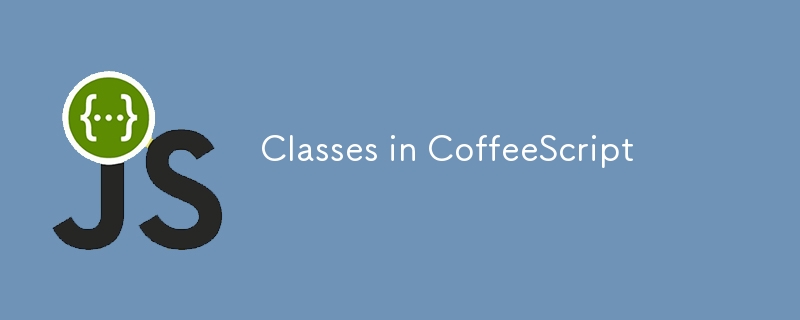
Classes in CoffeeScript
Article Introduction:Core points
CoffeeScript implements traditional class systems, although JavaScript itself does not. This makes it easier for beginners to understand while retaining the flexibility of prototypes for experienced programmers.
The CoffeeScript class supports inheritance, allowing the creation of subclasses that automatically inherit the properties and methods of their parent class. Subclasses can also override parent class functions, as shown in the "worry" and "profit" functions in the "Senator" and "Student" subclasses.
Although CoffeeScript is convenient and syntax concise, it still allows prototype systems that implement JavaScript, including the use of "::" as "pr
2025-02-24
comment 0
823
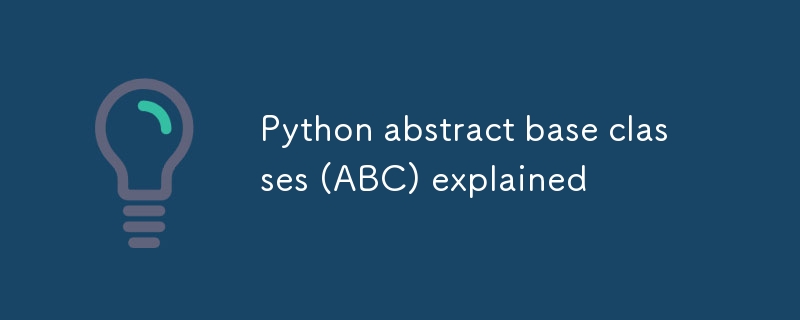
Python abstract base classes (ABC) explained
Article Introduction:Using Python's ABC (Abstract Base Class) can design clearer class structures, especially suitable for forcing subclasses to implement specific methods. 1. ABC is an abstract base class that cannot be instantiated directly. It can define methods that must be implemented, such as the area() method in the Shape class; 2. It can simulate interface functions by defining multiple abstract methods to ensure that the inherited class implements all methods, such as the Animal class requires the implementation of speak() and move(); 3. The abstract base class can partially implement methods and provide default logic, such as the start() must be implemented in the Vehicle class and stop() has default behavior. This keeps the interface unified, reduces duplicate code, and is easy to expand and maintain. Mastering ABC helps build cleanliness in large projects
2025-07-02
comment 0
931

How to serialize an object to a byte stream in Java
Article Introduction:To serialize Java objects into byte streams, you must first let the class implement the Serializable interface, and then use ObjectOutputStream to write the object to ByteArrayOutputStream. 1. Ensure that the class implements the java.io.Serializable interface, such as publicclassPersonimplementsSerializable; 2. Use the try-with-resources syntax to convert objects into byte arrays through ByteArrayOutputStream and ObjectOutputStream, such as oos.writeObject
2025-08-08
comment 0
891
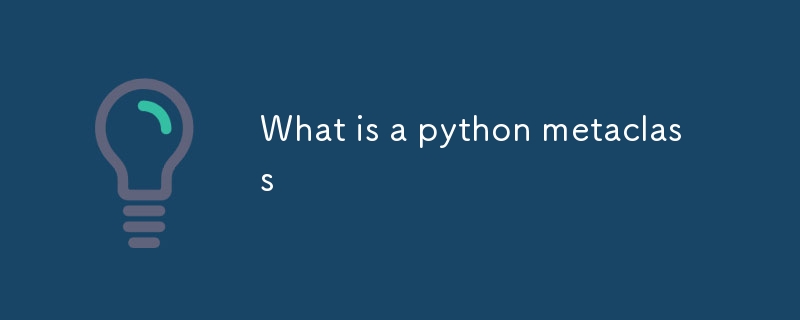
What is a python metaclass
Article Introduction:A metaclass is a "class that creates a class", and the default is to create a class; when you define a class, Python actually calls type('ClassName',(),{}) to generate a class object. Custom metaclasses can be processed before and after class creation by inheriting the type and overwriting new or init methods, such as forcing the implementation of methods, automatically registering subclasses, interface verification, modifying attributes/methods, implementing design patterns, etc. For example, check whether the class implements required_method. Metaclasses are suitable for framework development, but attention should be paid to avoiding abuse, complex debugging, over-encapsulation and other problems.
2025-07-02
comment 0
566
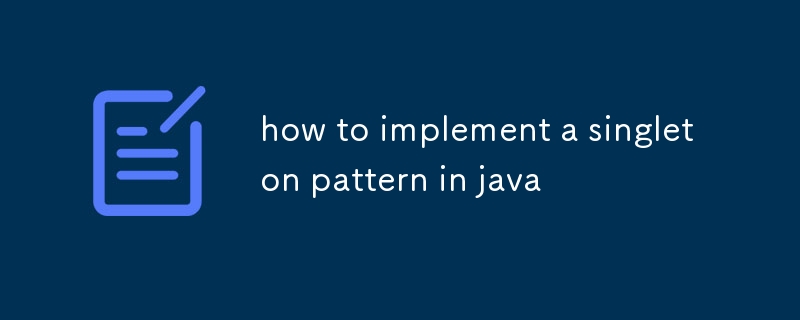
how to implement a singleton pattern in java
Article Introduction:The best way to implement singleton pattern using Java is BillPugh's static inner class or enumeration method. The former implements lazy loading and thread safety through static inner class, and the latter ensures uniqueness under serialization and reflection by the JVM. It is recommended to choose according to requirements: enumeration is suitable for high security scenarios, and static inner classes are suitable for scenarios that require flexibility and performance.
2025-08-22
comment 0
164
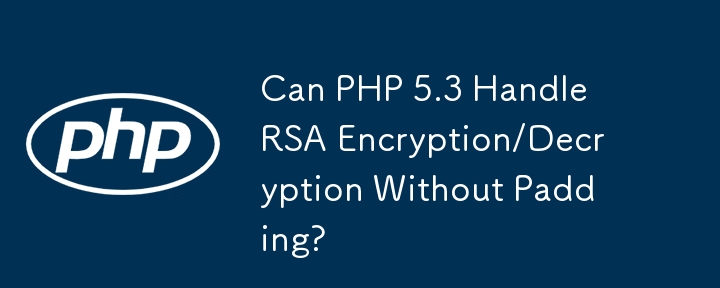

How do you implement custom session handling in PHP?
Article Introduction:Implementing custom session processing in PHP can be done by implementing the SessionHandlerInterface interface. The specific steps include: 1) Creating a class that implements SessionHandlerInterface, such as CustomSessionHandler; 2) Rewriting methods in the interface (such as open, close, read, write, destroy, gc) to define the life cycle and storage method of session data; 3) Register a custom session processor in a PHP script and start the session. This allows data to be stored in media such as MySQL and Redis to improve performance, security and scalability.
2025-04-24
comment 0
731

How to create a Composer plugin
Article Introduction:To create a Composer plug-in, you must first set the project structure and define composer.json, where the type is composer-plugin and extra.class specifies the main class; 2. Create the main class that implements PluginInterface, and executes logic when activated; 3. Add new commands by implementing the CommandProvider interface and returning a custom command instance; 4. Introduce and install plug-ins in the local project through the path repository for testing; 5. After the test is passed, it can be published to Packagist for others to use. The complete process implements the entire process of development from creation to testing to release of Composer plug-in, and finally successfully added comp
2025-08-26
comment 0
429
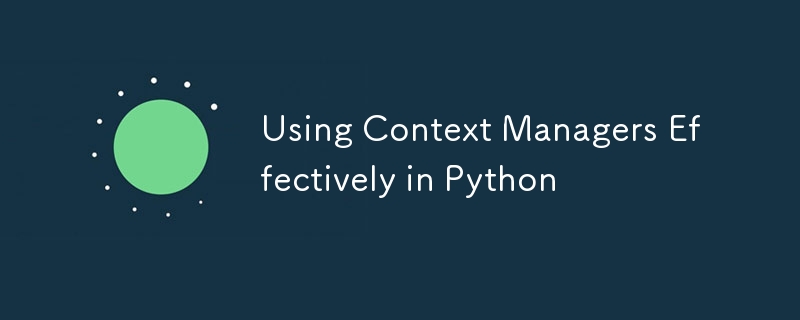
Using Context Managers Effectively in Python
Article Introduction:ContextManager is a tool used in Python to automatically manage resources, ensuring the correct release of resources through with statements; its core is a class that implements enter and exit methods or a generator function that uses contextmanager decorator; common application scenarios include file operations, database connections, locking mechanisms and temporary directory management; when customizing, you need to pay attention to exception handling, cleaning logic and resource nesting management.
2025-07-22
comment 0
939

PHP ews: Constructor Property Promotion
Article Introduction:Constructor Property Promotion is a feature introduced in PHP 8 that simplifies property declaration and initialization within a class. Before PHP 8, you had to explicitly declare class properties and then initialize them inside the constructor. With
2024-12-14
comment 0
980
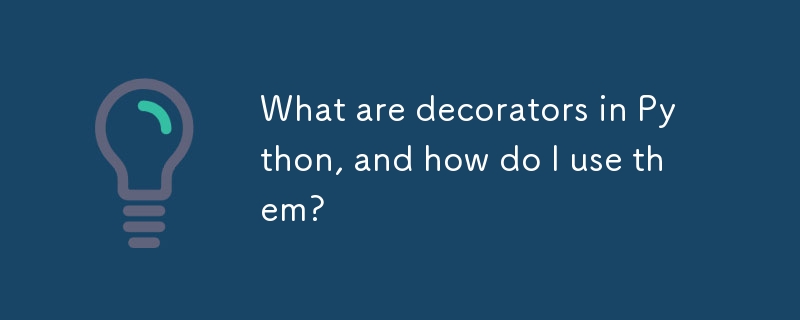
What are decorators in Python, and how do I use them?
Article Introduction:A decorator is a tool that modifies or enhances the behavior of a function or class without changing its source code. It implements function extension by accepting the objective function or class as parameters and returning a new wrapped function or class. It is often used to add logs, permission control, timing and other functions. To create a decorator: 1. Define a function that receives a function or class; 2. Define a wrapper function in it to add additional operations; 3. Call the original function or class; 4. Return the wrapped result. Just use the @decorator_name syntax to apply it to the objective function or class. For functions with parameters, compatibility can be ensured using *args and **kwargs in the decorator. Python has built-in @staticmethod and @c
2025-06-30
comment 0
949

How to create a custom cast for Eloquent models in Laravel?
Article Introduction:Create a custom Cast class that implements the CastsAttributes interface, define get and set methods to control the acquisition and setting of properties; 2. Register the Cast class in the $casts array of the Eloquent model to automatically convert the properties; 3. Optionally use CastsInboundAttributes to implement inbound only conversion, or define simple inline Casts through closures; 4. Support Cast with parameters, pass parameters through colons and access using $this->parameters in the class; 5. It is recommended to use classes rather than closures to improve maintainability, ensure data consistency and avoid duplicate logic.
2025-08-03
comment 0
431
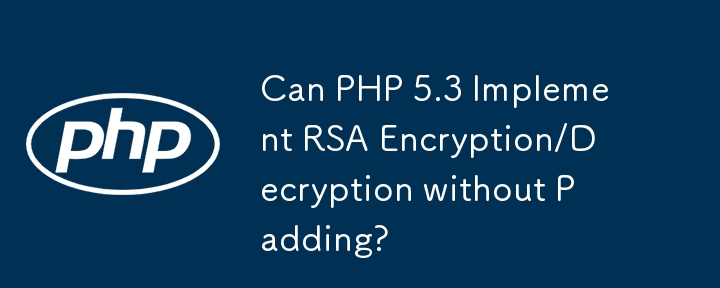

How to broadcast events in Laravel
Article Introduction:Configure the broadcast driver, select Pusher, Redis or Null, and set BROADCAST_DRIVER and corresponding credentials in the .env file; 2. Enable broadcast routing in the RouteServiceProvider to ensure that routes/channels.php is loaded; 3. Create an event class that implements the ShouldBroadcast interface, define the broadcastOn method to specify the channel type (such as PrivateChannel, Channel or PresenceChannel); 4. Define the authorization logic of the private channel in routes/channels.php to ensure that only authenticated users can
2025-08-12
comment 0
992

What are interfaces in PHP?
Article Introduction:Interfaces are used in PHP to define contracts that classes must follow, specifying methods that classes must implement, but do not provide specific implementations. This ensures consistency between different classes and facilitates modular, loosely coupled code. 1. The interface is similar to a blueprint, which specifies what methods should be used for a class but does not involve internal logic. 2. The class that implements the interface must contain all methods in the interface, otherwise an error will be reported. 3. Interfaces facilitate structural consistency, decoupling, testability and team collaboration across unrelated classes. 4. Using an interface is divided into two steps: first define it and then implement it in the class. 5. Classes can implement multiple interfaces at the same time. 6. The interface can have constants but not attributes. PHP7.4 supports type attributes but is not declared in the interface. PHP8.0 supports named parameters to improve readability.
2025-06-23
comment 0
317



















